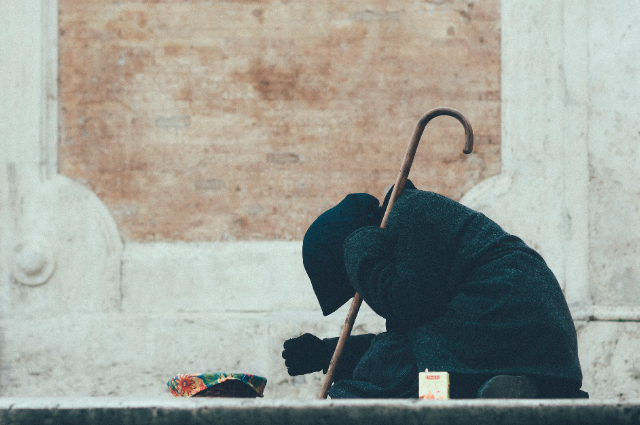
Photo by Egor Myznik on Unsplash
In what can only be described as a landmark in India’s social development story, Kerala is set to formally announce its complete eradication of extreme poverty. The historic declaration will take place at Thiruvananthapuram’s Central Stadium, enhanced by the presence of state ministers, local body representatives, and film legends Kamal Haasan, Mammootty, and Mohanlal, who will attend as chief guests. The event, attended by leaders across the political spectrum, including Opposition Leader V.D. Satheesan will also showcase cultural performances reflecting the spirit of unity and pride behind this achievement.
“This is a historic moment. Kerala has become the first Indian state to eradicate extreme poverty,” stated Local Self-Government Minister M.B. Rajesh and Education Minister V. Sivankutty during a press briefing. Their announcement marks not just an administrative success, but a moral victory in the state’s long-standing commitment to human development.
Understanding what it means to be in ‘Extreme Poverty-Free’
Extreme poverty refers to a condition where individuals or families are unable to meet even their most basic needs food, housing, healthcare, clothing, and education. The World Bank defines this as living on less than $2.15 a day, or about ₹180. However, India’s own yardstick and the Multidimensional Poverty Index (MPI) developed by NITI Aayog, takes a more holistic approach. It measures deprivation not only by income, but also by factors like nutrition, sanitation, housing quality, access to education, and essential services.
According to the 2023 NITI Aayog MPI, Kerala had already distinguished itself as the most progressive state in India with only 0.55% of its population classified as multidimensionally poor , far ahead of Goa and Puducherry, which followed closely behind. This latest declaration simply confirms what data had already hinted at: Kerala’s development model is deeply people-centred and inclusive.
The Road to Transformation: Kerala’s Model of Local Empowerment
The journey toward this milestone began in 2021 with the launch of the Extreme Poverty Eradication Project, one of the flagship programs of Chief Minister Pinarayi Vijayan’s second term. The philosophy behind it was straightforward yet bold which identified every single family living in extreme poverty, understood their unique challenges, and tailored solutions to their specific needs rather than relying on a generic welfare scheme.
Over several months, teams of Kudumbashree workers, ASHA health volunteers, and local body representatives conducted an exhaustive door-to-door survey across the state. Their mission was both administrative and humane. Through this effort, they identified 64,006 families (1,30,009 individuals) struggling under the burden of extreme deprivation.
Once identified, local governments began implementing micro-level interventions. These ranged from providing housing and medical aid to supporting livelihoods and ensuring access to social welfare benefits. Every family received an individualized plan a customized pathway out of poverty.
As a Local Self-Government Department (LSGD) official aptly described, “Instead of a one-size-fits-all approach, we created micro-level solutions. Some families needed assistive devices or palliative care, others needed employment or house repairs. The goal was simple that no one should slip through the cracks.”
Execution Through Unity and Accountability
The project’s success can be credited to strong coordination across departments that were all monitored under the Chief Minister’s Office. This model of inter-departmental collaboration ensured that housing, healthcare, transportation, and revenue departments worked seamlessly towards one shared goal. Regular progress reviews led by the Chief Minister himself kept the initiative on track.
In financial terms, the government allocated ₹80 crore in FY 2023–24 and ₹50 crore in FY 2024–25, focusing on housing, health, and livelihood support. The outcomes speak volumes:
- 3,913 houses built
- 1,338 families received land ownership
- 5,651 families given ₹2 lakh each for home repairs
- 21,263 individuals received crucial documents like ration cards
Even marginalized groups such as nomadic and landless families were brought under the program’s umbrella. Importantly, the government has pledged to maintain ongoing vigilance to ensure no family falls back into poverty.
Before the official announcement, the state conducted multiple layers of verification, including social audits and local-level cross-checks to ensure accuracy. After careful review, the final list confirmed 59,277 families successfully lifted out of extreme poverty. The process also noted 4,421 deceased individuals, 261 missing nomadic families, and 47 duplicate entries, reflecting a transparent and data-driven approach.
A Model for the Nation
Kerala’s achievement is not merely a statistic; it is a statement of what governance rooted in empathy and inclusion can accomplish. By aligning policy with community action and data with compassion, the state has demonstrated that development can be both measurable and humane.
At a time when poverty continues to challenge much of the world, Kerala’s model offers a roadmap and a blend of administrative efficiency, social commitment, and people’s participation. As the state prepares to celebrate this historic milestone, it also reaffirms a timeless truth that when the welfare of the most vulnerable becomes the centre of policy, prosperity follows naturally.
. . .
References:
